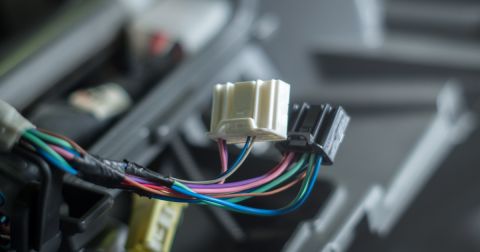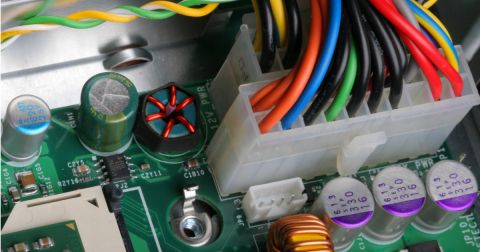Flexible & Printed Electronics: How They Complement Traditional Wire Harnesses

Technology continues to evolve rapidly, and industries are constantly pursuing lighter, more adaptable, and energy-efficient electrical systems. Among the most impactful advancements is the rise of flexible printed electronics, but does this development signal the end of traditional wire harnesses? Not quite.
From bendable circuits in wearables to printed sensors in smart packaging, flexible electronics are changing how engineers design embedded systems. Still, wire harnesses remain indispensable when it comes to power delivery, reliability, and environmental resilience. The future doesn’t require choosing between them—it demands a hybrid system approach that combines their strengths for improved performance and integration.
What Are Flexible & Printed Electronics?
Flexible printed circuits (FPCs) use conductive inks and ultra-thin substrates to produce circuits that bend, stretch, and conform to unconventional spaces. They’re well-suited for low-power applications, though traditional wire harnesses still handle the high-voltage and high-reliability requirements of mission-critical systems.
Key Technologies in Flexible & Printed Electronics
Conductive Ink Printing
- It uses silver, copper, or carbon-based inks to create conductive pathways.
- Perfect for low-power applications like RFID and sensors, but not built for the heavy electrical loads that wire harnesses handle.
Flexible Substrates
- Materials like polyimide and PET allow circuits to bend and flex.
- Ideal for touch interfaces and smart labels, though less effective where shielding or environmental durability is required.
Hybrid Systems
- A combination of printed electronics for lightweight applications and traditional wire harnesses for power-intensive and mission-critical functions.
- It is already used in automotive dashboards, medical wearables, and industrial IoT.

Applications & the Continued Role of Wire Harnesses
Automotive & Electric Vehicles (EVs)
Printed electronics streamline dashboards and UI components in modern EVs. Still, wire harnesses power drive systems, sensors, and ADAS networks.
- Example 1: Printed touch-sensitive dashboards reduce mechanical components, but wire harnesses are still needed for steering, engine, and powertrain connections.
- Example 2: Transparent, flexible defrosters are embedded in windshields, yet reliable wiring is required for heating and power circuits.
Aerospace & Aviation
Weight-reducing innovations like printed antennas enhance design, but avionics and flight control systems continue to rely on shielded, multi-pin cable assemblies.
- Example 1: Boeing and NASA use printed RF elements, while navigation systems demand traditional wire harness connectivity.
- Example 2: Flexible sensors monitor structural integrity, but all essential flight control and communication systems require shielded wiring for safety.
Industrial IoT & Smart Factories
Factories are getting smarter with printed sensors, but automation systems, heavy machinery, and high-speed data connections require wire harnesses for uninterrupted operation.
- Example : Printable humidity and gas sensors are used for monitoring, but machine power lines and safety circuits still depend on wire harnesses.
Medical & Wearable Devices
Wearable devices benefit from flexible electronics for biosensors and patches, but critical medical devices like MRI and CT scanners still need wire harnesses for power and high-speed data transmission.
- Example : Printed ECG patches monitor heart activity, but hospital imaging machines require high-quality cable assemblies and shielding.
Why Wire Harnesses Aren't Going Anywhere
While flexible and printed electronics bring exciting innovations, they have their limits. Here's why wire harnesses are still indispensable:
- Power Handling Limitations: Printed electronics work at low voltages. Wire harnesses are essential for high-voltage power distribution in EVs, aerospace, and industrial settings.
- Durability & Environmental Resistance: Printed circuits can be vulnerable to moisture, wear, and electromagnetic interference. Shielded wire harnesses are built to last, even in extreme conditions.
- Integration with Legacy Systems: Many industries still rely on wired infrastructure, so complete replacement isn't realistic. Hybrid solutions allow for smoother integration without sacrificing reliability.
The Future: Hybrid Systems with Wire Harnesses & Flexible Electronics
The goal isn't to replace wire harnesses but to make them smarter and more efficient while integrating emerging technologies:
- Wire harnesses will remain the backbone of high-power and mission-critical applications.
- Printed electronics will complement harnesses in low-power, lightweight, and aesthetic-focused applications.
- Advanced software solutions will optimize wire harness design, seamlessly integrating new technologies.
Smarter Harness Design for a Smarter World
Wire harnesses are evolving, not disappearing. As manufacturers push toward lighter, faster, and more responsive systems, the demand for intelligent wire harness design software grows. These tools support layout optimization, real-time error detection, and seamless integration of flexible printed electronics.
Companies that invest now in smarter design practices will gain a competitive edge in a market that values both innovation and reliability.
Wire harnesses aren’t going away. They’re adapting to shape the future of connected electronics.
Want to seamlessly design wiring for your harness? Experience the power of wire harness design in Altium Develop.











